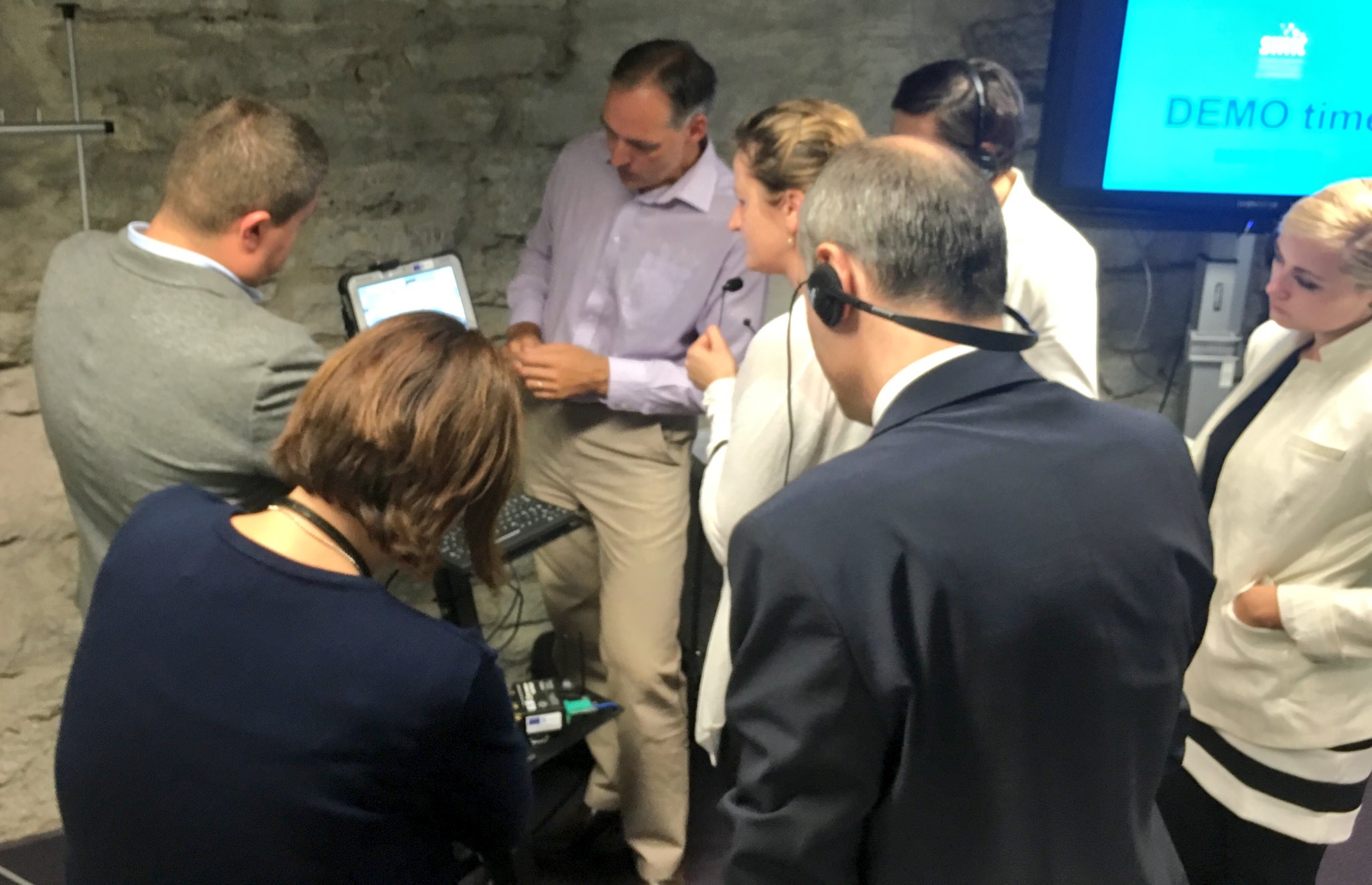During my preliminary research in preparing for a week of learning about e-governance in Estonia, I came across a quote from technology entrepreneur, Marc Adreessen, that read, “Skype has a great engineering team, which I like to describe as ‘all of Estonia.’”
After being week embedded in Tallinn with our host, the E-Governance Academy, and four other House Democracy Partnership (HDP) country delegations, only now does this sentiment really articulate my understanding of Estonia’s relationship with technology.
In many ways Skype, a pioneering communications platform, was an introduction for many Americans to the quiet country of Estonia. Neatly nestled with one foot in Eastern Europe and another in Scandinavia, Estonia’s unique positioning has resulted in a culture influenced by both a memory of Soviet occupation and a forward looking nod to Nordic ingenuity. This juxtaposition has resulted in a dedication to preserving independence and transforming democracy through technology. Now, with a population whose children learn to code at age four and claims more start-ups per capita than any other nation, integrating technology into the application of its government was a natural progression for Estonia. However, obtaining its namesake, “e-Estonia,” was as conscious and decisive trajectory for Estonians.
In the early 1990’s, Estonia declared its sovereignty from the Soviet Union. With the freedom to begin anew, Estonia began setting into motion what can retrospectively be considered its climb as a world leader in e-governance. Estonia first began this journey by prioritizing their investment in technology education for their children. This emphasis was the groundwork that equipped the next generation of Estonians to value and understand technology. Therefore, by the early 2000’s Internet access was seen as a social right in Estonia and was made available across the country to all its citizens. This culmination of skills and availability was the perfect climate to produce the technological innovation that flourishes today in Estonia.
It was an honor to join HDP at this https://www.gop.gov/about/about-the-conference/regional conference, and it was particularly insightful attending as the House Republican Conference’s Creative Director. Throughout this week’s crash course in Estonian e-governance, HDP’s United States delegation was joined by delegations from Georgia, Kyrgyzstan, Mongolia, and Ukraine. This cross-cultural exchange created an added level of diversity to learn from, and may have been one of the most valuable components of the seminar. Despite the uniqueness of each delegations’ history and developments in e-government, we were able to gain significant insight into the challenges and strengths that face each country’s ability to utilize an e-government system.
As noted, Estonia is a very small country; in fact it is 217 times smaller than the United States. Although its size is partially to credit for its success in e-governance, that should not be seen as a deterrence in implementing some of these practices in the United States or other larger countries. Estonia began their e-governance pursuit with one e-victory at a time, which allowed them to remain adaptable and to continue to grow. Despite America’s size, e-governance is also possible in the United States, especially when scaled to the state and local level first. Employing e-governance in America would involve a macro cultural shift, beginning on a micro level.
As technology advances at a rate at hyper speed, e-governance is where the world is headed. It is exciting to be able to take the lessons I have learned this week, share them with my colleagues and use them as a framework for thinking about governance. Furthermore, government and innovation are not mutually exclusive. If America is to remain competitive in technology on the world stage, we must simultaneously be thinking about technology when we think about our government.
This brings me back to my quote by Mr. Andressen and my biggest take away from the week. By investing in its people, which began with an education in technology, Estonians are continuing to repay this investment. In a culture that values the proactive over the reactive, Estonians are always looking for ways that technology can simplify the lives of their citizens. By utilizing technology to eliminate paperwork and bureaucratic headaches, Estonians are prioritizing their citizens’ time, an investment in one of the most valuable capital goods.
Estonians are the first to tell you that their small and beautiful country is full of quiet, stoic people. However this may be true, their mark on the world is being noticed and it can better the way we govern.
Top